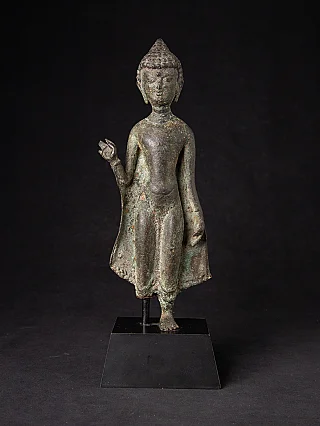Bagan in Burma
Author : Peter Vredeveld

Sunset in Bagan, the city of the thousand pagodas
Bagan, formerly known as Pagan, is a living testament to Myanmar's rich historical tapestry and architectural grandeur. Located in Myanmar's Mandalay region, Bagan, formerly known as Pagan, stands as a testament to the country's profound historical significance. It served as the capital of the Kingdom of Pagan from the 9th to the 13th century, marking the first union of territories that now compose modern Myanmar. Bagan, often compared to Cambodia's Angkor Wat, holds a unique place in the world of historical and architectural wonders.
Historical Legacy

Early Origins: Bagan's roots can be traced back to the early 2nd century when it was founded by Thammodarit. Subsequently, the city was fortified with twelve gates and a protective moat in 849 CE. During its golden age under the Pagan Empire, spanning more than 250 years, Bagan flourished with an astonishing 10,000 religious monuments scattered across a 40-square-mile expanse.
Religious and Cultural Diversity: Bagan's culture was marked by an amalgamation of fluid, syncretic, and unorthodox religions. Bagan was a melting pot of diverse religious beliefs during Pyu Era, where Theravada Buddhism harmoniously coexisted with various other religious groups, including Mahayana Buddhism, Tantric Buddhism, Saivite, and Vaishnava schools. Nestled in an earthquake-prone zone, Bagan weathered numerous seismic events that left significant damage to its religious and archaeological sites. In the 1990s, extensive restoration projects led by the military government resulted in the preservation of about 2,229 temples and monuments. Today, Bagan holds the esteemed title of a UNESCO World Heritage Site, owing to its remarkable ancient relics, stone inscriptions, and pagodas.
Architecture
Stupas: Bagan is particularly renowned for its stupas, massive structures housing relic chambers. These pagodas evolved from early Pyu designs and remain among the most iconic structures in the region.
Hollow Temples: In contrast to stupas, the hollow gu-style temples are primarily used for devotional worship of Lord Buddha. They offer a serene and introspective experience for visitors.
Cultural Heritage and Museums
Bagan houses two prominent museums:
- Bagan Archaeological Museum: As one of the oldest museums in the region, it is home to the Myazedi inscriptions, often referred to as the "Rosetta Stone of Burma."
- Anawrahta's Palace: Reconstructed on the foundations of the old palace site, this structure offers a glimpse into Bagan's royal history.
Noteworthy Cultural Sites
Each of Bagan's cultural sites offers a unique and enriching experience for visitors:
- Ananda Temple: This architectural masterpiece is among the most famous temples in Bagan, boasting Mon design influences and exquisite craftsmanship.
- Bupaya Pagoda: Initially constructed in the 9th century, this pagoda faced destruction during a 1975 earthquake but has since been meticulously rebuilt and adorned with gold leaf, now glistening in the Myanmar sun.
- Dhammayangyi Temple: As the largest temple in Bagan, it stands tall, both in terms of size and historical significance, inviting visitors to explore its grandeur.
- Myazedi Inscription: Known as the "Rosetta Stone of Burma," this inscription is a linguistic treasure, featuring inscriptions in four languages: Pyu, Old Mon, Old Burmese, and Pali, offering a glimpse into the diverse linguistic history of the region.
Share this page
































